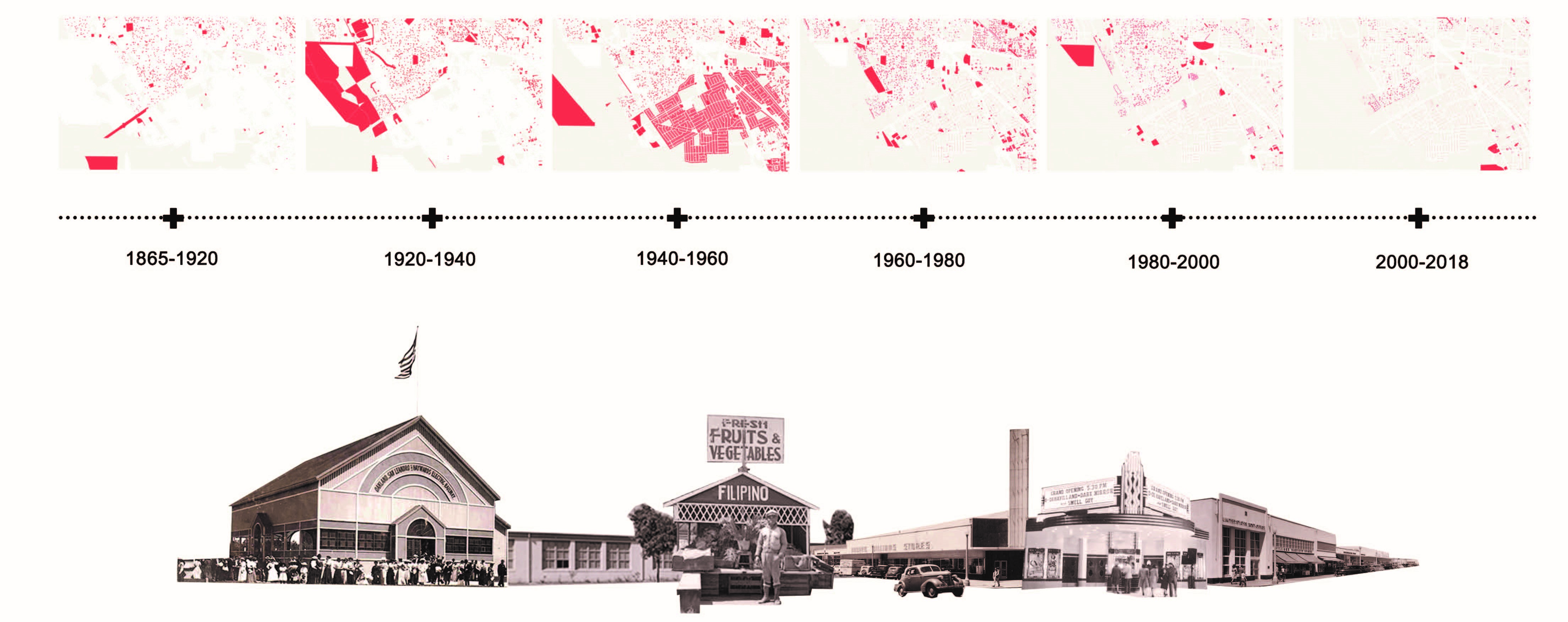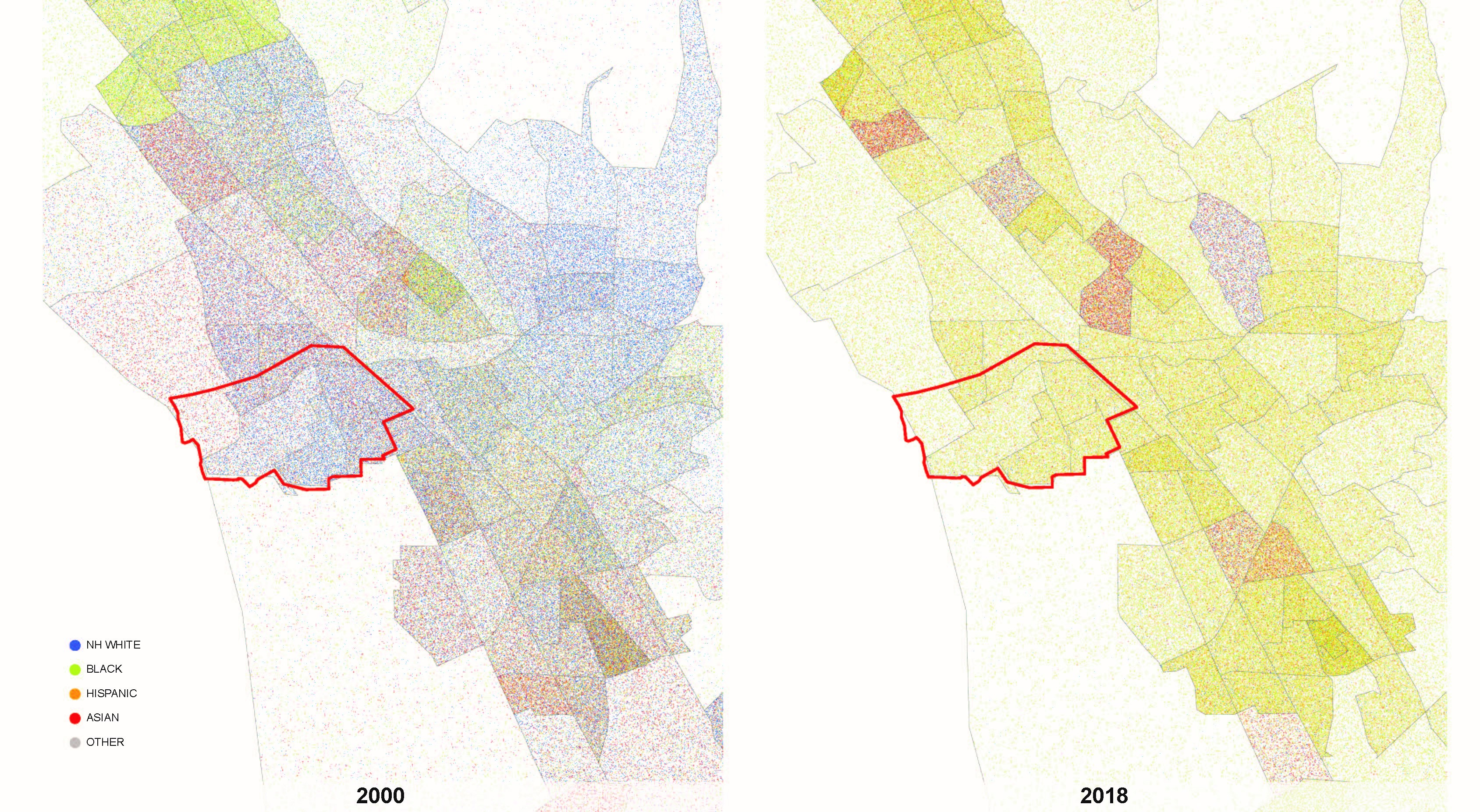“MAKE CULTURES TANGIBLE”

UC Berkeley | Fall 2018 Group project collaborators: Tiantong Gau, Preeti Srinivasan, Abigail Granbery
Supervisors: Ghigo DiTommaso, Scot Elder
San Lorenzo in the context of the Bay San Lorenzo is a small, unincorporated territory south of Oakland and San Leandro in Alameda County. It is surrounded by the largest cities in the area, with ample access to the Peninsula, Oakland, and San Francisco via BART. And while the rest of the Bay Area has moved into a modern time, the San Lorenzo Village is stuck in time. The vast majority of the development occurred in the 1940’s and 50’s. This development was the beginning of the “California Method” of building, and houses were constructed in under an hour. While other suburban areas were made without community spaces, the main contractor for the San Lorenzo village ensured that plots were reserved for churches. Because of the massive construction in a short amount of time, the bu ilt form is incredibly static and stuck in time. Furthermore, the built form prioritized seperation over inclusion (with the exception of churches). However, the population and those that use these spaces are incredibly dynamic. The area has experienced volatile population shifts, with a complete reversal of demographics in the past two
LOCATION
SITE CONTEXT
FIRST IMPRESSIONS
San Lorenzo has minimal community facilities that include a few community centers (under the Hayward recreation zone) and 2 libraries- namely, the San Lorenzo library and Manor Branch Library. These are relatively underused. The area is home to a number of retail centers, chiefly the Bayfair Center, the Lorenzo Manor Shopping Center and a Greenhouse Mall. Additionally, Hesperian Boulevard houses some motley commercial development

HISTORY OF YEAR BUILT
SanLorenzo an unincorporated, suburban community south of Oakland in the San Francisco Bay Area.
Nearly all of San Lorenzo’s houses and most of the other buildings were constructed during the community’s period of rapid growth between 1940 and 1960.

SPATIAL BOUNDARY
“The designs [of the houses] provided for direct access to the rear yard from the living room or dining area, which, along with the small front porches, reflect the period’s emphasis away from the street and public life and towards family life and private outdoor space.” -Andrew Hope, Cultural Resource Management Journal

BUILDING STUCK IN TIME

RESEARCH FINDINGS
Spatial Boundaries
We began by investigating the built history of the area. The history of development of the area was very sparse until speculative development for returning soliers took hold in the area in 1944. This spurred on the majority of development for the next decade. The main contractor for the San Lorenzo Village was David Bohannon, the future president of ULI. Wtih support from the Federal Housing Authority (FHA), Bohannon built the largest fully FHA funded segregated development. During this time, Bohannon prefected the “California Method,” which brought sawmills on site to decrease the amount of time for building. These sorts of methods were attracted to unincorporated areas due to lack of building codes. The houses in San Lorenzo built in this time period are all almost exactly identical, with only slight variations (tweaks of the gable and a reversal of the floor plan). As a result, much of the neighborhood is extremely similar. Very little has been built since, meaning the number of residents has remained fairly steady since the 1950’.

AGENCY INVENTORY
INTERVIEW
![]()
PROBLEM-PROPOSAL
![]()

COMPETITION![]()
TRANSCEND BOUNDARY TRANSCEND BOUNDARY-- ENVIRONMENTAL
TRANSCEND BOUNDARY TRANSCEND BOUNDARY-- PUBLIC SPACE
OVERLAY
SITE DEVELOPMENT CYCLE